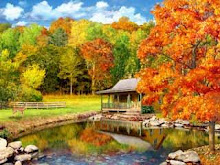



Posted by insyirah sensei at 1:28 PM 0 comments
Posted by insyirah sensei at 10:11 PM 0 comments


Posted by insyirah sensei at 3:14 PM 0 comments
Labels: Japanese Culture
Posted by insyirah sensei at 8:41 PM 0 comments
There are so many interesting activities and you are absolutely will enjoy it!
So, to all UPSI students, you are invited to come and cherish the activities.
I'm pretty sure you want to try on the yukata, right? If so, do come to the fiesta and I promise you will enjoy yourself wearing yukata and also enjoy the Japanese food fiesta. We have soba, tenpura, sushi and many more!
Besides that, we also have Ikebana (Japanese flower arrangement) demonstration and Ikebana competition. The owner of this blog will demonstrate for Ikebana demonstration (^-^). Both female and male can do the Ikebana. Definitely you will enjoy this activity. Honto ni omoshiroi yo!
For the opening ceremony, we will have Japanese sketches, Japanese dance and also traditional music. For your information, the sketches that will be performed on that day are the sketches that we participated in the 2nd Japanese Short Drama Contest 2009 for College and University Students. But, we don't know the result of the competition yet.
Hopefully we won something in the contest. If we won, I'll share the story about the result of contest in the next entry soon,ok. =)
See you soon at Japanese Fiesta 2009!
http://www.upsi.edu.my/index.php/en/announcements/489-japanese-fiesta-2009
Posted by insyirah sensei at 11:46 PM 0 comments
Hello everyone!
Today, I would like to share with you some of the phrases that we definitely use them during buying things.Almost every we deal with buy-sell business right?
So, hopefully those phrases will help you and don't feel shy to apply and use them in everyday life.

How much does it cost? = Ikura desu ka
いくら ですか
It is expensive, isn't it? = Takai desu ne
高い ですね
It is nice, isn't it? = Kirei desu ne
きれい ですね
Where is this made? = kore wa doko no seihin desu ka
これ は どこ の せいひん ですか
This is made in Malaysia = Malaysia-sei desu
マレーシア せい です
Can you make it a little cheaper? = chotto makete kuremasen ka
ちょっと まけて くれませんか
Can I buy it on credit? = shinyoogashi de kau koto ga dekimasu ka
しにょうがし で かう こと が できますか
Does this have a guarantee? = kore wa hoshou tsuki desu ka
これ は ほしょうつき ですか
May I try on this shirt? = kono shatsu o kite mite mo ii desu ka
この シャツ を きて みて もいいですか
What is the size? = saizu wa dono gurai desu ka
サイズ は どのぐらい ですか
I like this = watashi wa kore ga suki desu
私は これ が 好き です
Give me that, please = Kore o kudasai
これ を ください
Please give me a receipt = reshiito o kudasai
レシイト を ください
How do you feel now? More confidence to speak Japanese while shopping? Just try it and let's share here how do you find those phrases useful for you.
Let's enjoy the lesson!
If you have any comment, just leave your message,ok? (^-^)
I would like to hear something from you, my blog readers!
Ja ne..
Posted by insyirah sensei at 11:35 PM 0 comments

Konbanwa. Minna san wa genki?Hisashiburi da yo ne..
Watashi wa sukoshi isogashii desu kara.Blog ni chotto update no kota ga dekinai.
Hora,kyou wa AISATSU TO NICHIJOO HYOOGEN wo benkyou shimashou ne (^-^)
Welcome = Irasshaimase
いらっしゃいませ
Goodbye = Sayounara
さようなら
Happy New Year = Akemashite Omedetou Gozaimasu
あけまして おめでとうございます
Happy Birthday = Tanjyoubi Omedetou Gozaimasu
たんじょうび おめでとう ございます
Congratulations = Omedetou gozaimasu
おめでとう ございます
Thank you = Arigatou gozaimasu
ありがとう ございます
You are welcome = Douitashimashite
どういたしまして
I'm sorry = Sumimasen / Gomenne
すみません / ごめんね
How are you? = Ogenki desu ka
お元気 ですか
See you again = Ja mata
じゃまた
What is your name?= Onamae wa
おなまえ は
Is that so? = Sou desu ka
そうですか
Yes, that's right = Hai,sou desu
はい、そうです
What is this called in Japanese? = これは 日本語で なんといいますか
If u have anything to ask about other daily expressions, just leave your comment and I'll try my best to answer.
Ja ne =)
Posted by insyirah sensei at 4:01 PM 1 comments
Labels: Nihongo (Episode 2)





